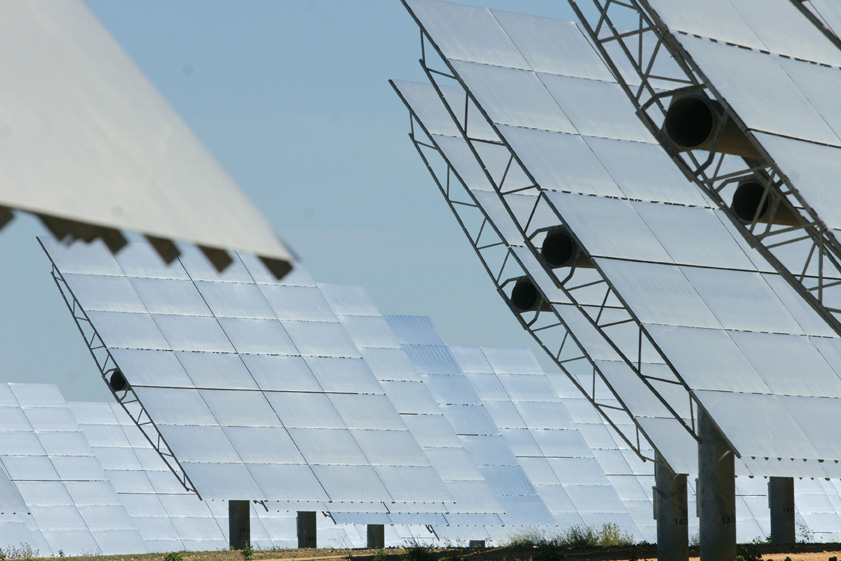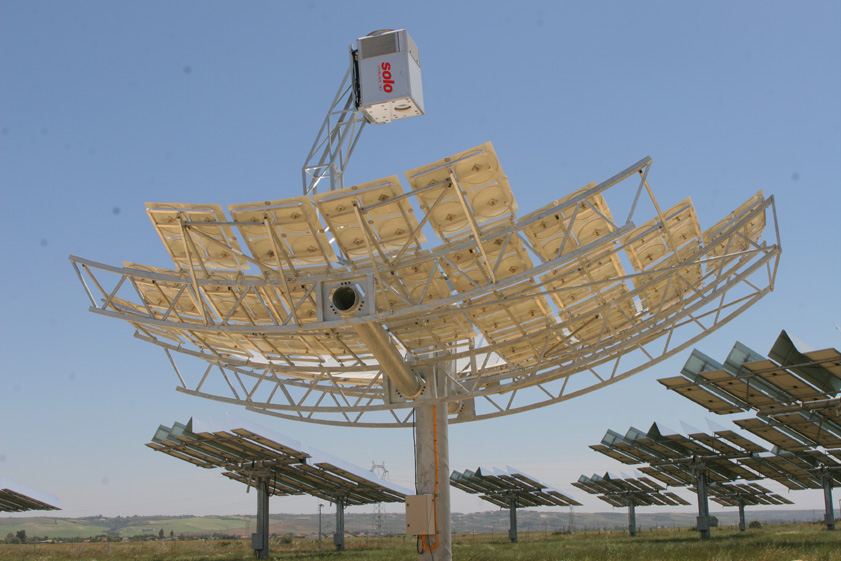La energía solar de concentración utiliza lentes o espejos y dispositivos de seguimiento solar para concentrar la radiación solar incidente en una superficie reducida obteniendo altas temperaturas para producir electricidad
Thermoelectric solar energy uses lenses or mirrors and solar tracking devices to concentrate incident solar radiation on a small surface. This concentration allows high temperatures to be obtained and corresponding high thermodynamic efficiencies of conversion from heat to work. The heat obtained in this process is normally transferred to a fluid that passes through a turbine, coupled with a generator, producing electricity. Across the different solar concentrating systems, three types of technology have been developed.
Parabolic Trough Plants. These consist of channel-shaped mirror collectors, parabolic in section, that reflect sunlight onto a tube in the channel’s focal line, which contains the heat transfer fluid. This fluid is heated to about 400ºC, with solar concentration ratios of 30 to 80, being transferred to a fluid that feeds a conventional turbine that generates electricity.
Tower Plants. These are made up of a field of heliostats that concentrate sunlight onto a central receiver mounted on top of a tower that acts as a heat exchanger. The orders of concentration are from 200 to 1,000, reaching temperatures above 600ºC.
Parabolic Dish Solar Generators. These consist of a disc-shaped parabolic reflector which concentrates sunlight onto a receiver at the focal point of the disc. This absorbs the energy reflected by the concentrators, making the receiver fluid heat up to around 750ºC. It is then used to generate electricity in a small motor, e.g. a Stirling motor or a micro turbine (Brayton) attached to the receiver.




